Editorial Commissionof theCATECHISM OF THE CATHOLIC CHURCH
INFORMATIVE DOSSIER
INTRODUCTION
On November 15, 1986 the "ad hoc" Commission appointed by His Holiness John Paul II to prepare a Catechism for the Universal Church met for the first time; on February 14, 1992 it concluded its work; on June 25, 1992 the Supreme Pontiff will proceed to the formal act of approval of the text submitted to him by the Commission. The work will be entitled: "Catechism of the Catholic Church".
The composition of the Commission, which was highly representative; the more than five years of intensive work; the wide and, in several ways, qualified consultation on the level of the universal Church: these are elements for which it is to be expected that this new Catechism will enter history as a document that is not unworthy of the Ecumenical Council, which is an ideal point of reference to the Catechism and it will remain a work of permanent utility for pastors and catechists of the present generation as well as those of the third millennium, for whose service it was intended.
In order to facilitate the reception of the Catechism of the Catholic Church by the interested persons, but who are not as familiar with this kind of document and its literary genre, the editorial Commission thought to gather in a short, organic dossier some illustrative notes: 1) A note on "What is a catechism?"; 2) The iter of the "Catechism of the Catholic Church"; 3) Characteristics of the "Catechism of the Catholic Church"; 4) A brief Index of the work.
With reference to the catechism, Albino Luciani, a great catechist even during his few days on the See of Peter as John Paul I, in his book "New grains of catechesis " (Nuove briciole di catechetica, Vittorio Veneto, 1961, p. 50) wrote:
"Blessed be the Catechism! It is the 'king of books' used to say Pius XI, while Pius XII said: 'That small book is in itself more valuable than a huge encyclopedia; it contains the truths that are to be believed, the obligations that are to be fulfilled, the means for one's sanctification. What is there of more importance on earth? It is the book of wisdom, the art of living well, the peace of the soul, security in one's trial. It teaches us how to please God' (Pius XII, 8 June 1952)."
These words can also be applied to the Catechism of the Catholic Church. May this dossier help to prepare a good and receptive ground that the precious seed sown by the Catechism of the Catholic Church may yield abundant fruits.
Vatican City, June 15, 1992.
MOST REV. GIOVANNI LAJOLO
SUMMARY
The Catechism of the Catholic Church
Catechism of the Catholic Church
Course of its Preparation
Characteristics
Table of Contents
Working Boards
THE CATECHISMIN THE HISTORY OF THE CHURCH
In front of the Catechism of the Catholic Church, there arise, here and there, among other things, the questions: what is, properly speaking, a "catechism"? Since when "catechisms" have existed in the Church?
Origin of the word
It derives from "catechesis ", a word which the ancient Greeks used in reference to the theatre and which means "to make resound like an echo"(1). This word, which does not appear neither in the Old Testament nor in the Gospels, was taken up by the nascent Church to indicate the primordial duty to make disciples (cf. Acts of the Apostles and the Pauline Letters). The proclamation of salvation was to be consolidated(2), the deeds and the work had to provoke an "echo" in the mind and in the heart of the listeners, to transform all their life. The " book " which, as time went by, became the normal aid for this duty was called Catechism.
What is a catechism
In a more common sense, a so-called text is that which contains the fundamental Christian truths, formulated in a clear way so that their understanding, apprehension and lively reception are made easier.
One should immediately clarify that this didactic-religious genre may assume very different concrete expressions according to their addressees: from bishops, parish priests or catechists who will make use of - among other things - such an instrument to catechize: catechismus maior; up to the child, the young person or the adult, in different levels and circumstances, who are catechized by means of this book: catechismus minor.
A book with various titles and sub-titles
It is to be recalled that throughout the centuries various titles were used, together with or in place of that of catechism: for example, "Christian Doctrine", "Compendium of the Faith", "Cartilla", or, as it has already been said, the catechism texts were sub-titled "Maior", "Minor", "Parvus", etc... These vary partially either in their structure or in their particular aspect which they underline, but, because of their contents and finality, enter in the general category of catechisms.
Were they always books?
Almost always, though in a reduced number of copies prior to the invention of printing. In ancient times and in the Middle Ages, to make good for the lack of manual copies, the system of "tablets" was used; on these "tablets" the truths of the faith and the prayers were inscribed and were put in a place in the house or Church where they could be easily seen, so that everybody could understand their content. In other times, they were "illustrated catechisms" which served not only the illiterate but also the whole community as didactic aids.
Since when do Catechisms exist?
In a wide sense, they are found since ancient times. Here several stages are to be pointed out in a historical trajectory which reaches the actual form. In this rapid overlook reference is made only to some salient examples, although it would be important to underline the multiple and varied composition - throughout all the centuries - of these means of catechesis.
Remote Antecedents
In the Old Testament the word "didaché" - teaching - is found.(3) It is given the meaning of transmission of the Word of God as a teaching of life. Thus, in Deut 4:10 we read: "Gather the people to me, that I may let them hear my words so that they may learn to fear me all the days that they live upon the earth, and that they may teach their children so". And in Deut 11:19-20: "And you shall teach them to your children, talking of them... And you shall write them upon the doorposts of your house".
In the New Testament, the Gospels are the first great "Catechism" which was transmitted orally and then put to writing. Jesus "teaches" and "preaches" (Matt 9:35; Mark 1:21; Luke 21:37). The Sermon of the Mount (Matt 5,2) speaks of the "teaching to the disciples". This mission was handed over to Peter with the office of the "keys" which, in Hebrew mentality, meant, amongst others, the office of teaching. In the Acts and the Pauline Letters the word "to catechize" appears already as the instruction regarding the salvific action of God.
In Syria, at the end of the first century, the "Didaché" or "Doctrine of the Apostles" was compiled(4). It was a guide to instruct those who were preparing to be baptised as well as to dispose all the life of the community according to a scheme of the "two ways", that of "life" and that of "death".
In the beginning of the V Century, an exceptional author, St Augustine, on the request of a catechist, writes 27 chapters in which he tries to help deepen the faith of those Christians who, though educated in profane knowledge, were "rude" in the religious one. Thus he entitles his work De catechizandis rudibus(5). He begins with the history of salvation which culminates in the charity brought by Jesus Christ, who through his Resurrection gives joy to the catechist and the one being catechized. As all the works of St Augustine, even this one has remained of interest.
In the IX century, Alcuino, the great promoter of the cultural Renaissance during the time of Charles the Great, is attributed the redaction of Disputatio puerorum per interrogationes et responsiones(6) (an exposition for children in questions and answers). It includes sacred history and the doctrine on the Sacraments, the Creed and the Our Father. The title indicates already its method and is a forerunner of modern catechisms. It was widely used until the XII century. The vernacular language was used for the catechesis of this period.
"More recent" antecedents
In the XII century we read in the Book of the Sentences of Peter Lombard(7) that, the book which contained the basic interrogation for baptism or for the subsequent formation, was called "catechism"; but still the word did not enter current use.
Other works, such as the "Lucidari" and "Septenari"(8), adopted different schemes but they aimed always at the same aim: catechizing. These latter works spread widely and made use of the original method of comparing or contrasting seven parts: the seven requests of the Our Father, in relation to the seven Beatitudes and to the seven Gifts of the Holy Spirit. Or else, the seven principal virtues contrasted to the seven capital vices.
In the middle of the XIII Century St Thomas Aquinas - widely known for this theological works - preached in a simple style and in a popular language. Thus short works with a scheme which will be proper of catechisms cropped up: that which one is to believe (Creed); that which one is to hope (Our Father); that which one is to do (the Commandments); grace for all the Christian life (the Sacraments)(9).
Properly called Catechisms
In the XIV Century (1357), the Archbishop of York published the "Lay Folks Catechism"(10) which included the Creed, the Sacraments, the two precepts of charity, the seven capital sins and the seven fundamental virtues. For the first time the name Catechism was explicitly used. It was published in two languages, Latin and English, for popular use. Already several other times catechetical works were written, in the vernacular language for those people who did not normally use Latin.
Later on, in 1368, the text of the First Canon of the Synod of Lavaur (Narbonne)(11) is yet again a Catechismus Maior, for the clerics. Its catechistical aim appears clear through its contents and the need of its apprehension. It was used to teach the people on Sundays and on Feast days.
In the XV Century an important decree of the Council of Tortosa in 1429(12) prescribed the redaction of "a brief and useful summary of the Christian Doctrine ..." which was also called the "brief compendium". These titles appear here as synonyms of catechism.
The great century of Catechisms
In the midst of the XVI Century, as a mature result of the Council of Trent, we find the Catechism published in 1566(13). Its official name is Catechismus ex Decreto Concilii Tridentini ad Parochos, although it is better known as the Catechism of "St Pius V" or the Roman Catechism. This Catechismus Maior was redacted for the Parish Priests with the aim of helping them in their duty of teaching the faith to the people. It was then a difficult moment, when the need for a self-reform and the defence of the faith in front of the Protestant division was felt. The doctrinal and methodological features of this Roman Catechism were so clear that it became a model for both its time and beyond.
From the Roman Catechism onwards, did the catechisms become uniform?
First of all, we should distinguish between unity and uniformity. The latter suggests one single scheme while the former safeguards the essence, leaving space for creativity.
The Catechism of Trent brought about unity but without effacing the efficacy of those other texts which had already proved their validity. In this regard we can quote the example of the Catechisms (Maior, Minimus and Minor) that St Peter Canisius, as from 1555, began to publish in Germany(14). These texts were concrete and permeated with Sacred Scripture and the Fathers of the Church. Without entering into any controversy, they ascertained that which needed to be so from a Christian point of view in that moment and in that particular European region. They were so widely spread that the expression "to know Canisius" became synonymous with "to know the Catechism". Their reprintings were more than 400 and were translated into some 50 languages, so that the concrete circumstances which were at the origin of their redaction were completely overcome.
At the same time, it should be noted that the Roman Catechism encouraged also the redaction of new texts, which, though originating and referring to the Tridentine one, they presented, however, originality in their consideration of both their addressees and the particular circumstances. An obvious example for this can be found in Latin America in the Catecismo del Tercer Concilio de Lima. It is written in three languages (Castellan-Quechua-Aymara) and it is the result of the creativity proper to the best of catechists. In fact, as it is stated in the introduction, it follows in the footsteps of the General Council of Trent "in essence and order" while "in its mood and style" it adapts itself to the native people(15). Hence, it incorporated methodologically the thematic proper to the autochthonous peoples both in its exposition of the "Doctrina Cristiana y Catecismo" and in its "Confesionario" and "Sermonario". Some of these texts were addressed to priests, while others were addressed to the indios, in a more developed or in a briefer version. The different books which formed this Catechism were printed in Peru, between 1584 and 1585.
Luther, Calvin as well as others availed themselves of the experience of Catechisms
Martin Luther, in 1529, using the material of his catechetical sermons wrote his Catechismus Maior, as a guide to the preachers of his reform. Later he wrote another one for "children and simple people", which he even called Enchiridion(16). The reprintings were many and their influence was great in the spreading of Protestantism. Also other reformers, among whom Calvin, made use of this genre to teach people their new doctrines. The efficacy of this "book" had already been proved and thus all employed this indispensable aid for the religious formation at all levels.
Every century, every country, every diocese continued to produce catechisms
It would be too long to list all the catechisms that were published in every region since the Council of Trent up to our days. We recall only some authors (without excluding others): St Robert Bellarmine, Astete, Fleury, Casati, Migazzi, Deharbe, Dupanloup, 'St Pius X' ...
The request of the 1985 Synod marks a continuity
And the new catechism? Many speak about it; they believe that it would be the "only catechism"; however, it will be for the Catholic Church, the basis and the point of reference for the preparation of local catechisms. The whole Church, consulted through its Bishops, has participated in its progressive preparation. It will encourage the use of creativity in evangelization on the eve of the third millennium. It will continue on the best of the Catholic catechistical tradition.
CATECHISM OF THE CATHOLIC CHURCH
COURSE OF ITS PREPARATION(Synthesis)
The present Catechism of the Catholic Church is the fruit of a multifaceted undertaking whose most important stages can be briefly summarized as follows:
October 1985:
The recommendation of the Synod of Bishops:"There were many who expressed the wish that a catechism or a compendium of all Catholic doctrine regarding both faith and morals be prepared so that it could serve as a kind of point of reference for catechisms or compendia prepared in different regions. The presentation of doctrine should be biblical and liturgical. It is to embody a sound doctrine applied to the present life of Christians" (Relatio Finalis, II, B, 4).
10 July 1986:
Decision of the Holy Father to appoint a Commission of Cardinals and Bishops for the preparation of a catechism project for the universal Church or a compendium of Catholic doctrine (of faith and morals) which could be a point of reference for the catechisms prepared or to be prepared in various regions.
November 1986:
First meeting of the Commission to indicate the fundamental elements of the text (nature, aim, characteristics, identification of those to whom it is to be directed, timetable ...);
1987:
- preparation of two successive schemes;
- December: elaboration of a preliminary project for which 40 international experts are consulted.
February 1989:
The Commission examines a project of the catechism to be sent to all Bishops for their observations;
November 1989:
A revised project is sent to all Bishops for the intended consultation (to last until May 1990);
June - October 1990:
Examination and evaluation of the responses submitted by the Bishops. Outcome of the consultation with the Bishops:
- agreement in considering as necessary and timely, as well as urgent, a single catechetical text for the entire Catholic Church to serve as a point of reference for the composition of national and diocesan catechisms;- differentiations and distinctions concerning the contents and the redactional style of the text;- positive evaluation of the revised project, considered a sound basis to support the great number of suggested amendments (more than 24,000), in view of ihe final edition of the text.
November 1990 - September 1991:
In the light of the results of the consultation, preparation of a new project of the catechism for the universal church (first, the "textus emendatus", and then the "pre-definitive" text: first and second corrected versions)
October 1991:
Examination and evaluation by the Commission of the corrected "pre-definitive version" (the seventh edition, from the beginning of the undertaking)
November 1991 - February 1992:
Preparation of the definitive project of the text
14 February 1992:
Unanimous approval by the Commission of the "definitive project" of the Catechism of the Catholic Church, to be presented to the Holy Father for his judgment.
30 April 1992:
Definitive revision of the "Catechism of the Catholic Church".
25 June 1992:
Official approval by the Holy Father of the Catechismus Ecclesiae Catholicae
DATES OF THE VARIOUS PROJECTS
1.
"Adumbratio Schematis"
(February 1987)
2.
Preliminary Project
(December 1987)
3.
Project
(February 1989)
4.
Revised Project
(November 1989)
5.
"Textus emendatus"
(March 1991)
6.
Pre-definitive Text
(May 1991)
7.
Pre-definitive Text (corrected version)
(28 August 1991)
8.
Definitive Text
(8 December 1991)
9.
Definitive Project (as voted by the Commission)
(14 February 1992)
10.
Catechismus Ecclesiae Catholicae
revised:
officially approved by the Holy Father:
30 April 199225 June 1992
CATECHISM OF THE CATHOLIC CHURCH
CHARACTERISTICS
Premise
The present "note" can only be incomplete and informal, owing to limitations of time and space.
It aims to offer a point of departure for a further deeper and more comprehensive reflection.
Nature
The Catechism of the Catholic Church is presented:
as an instrument to convey the essential and fundamental content of Catholic faith and morals (tam de fide quam de moribus), in a complete and summary way (non omnia sed totum);
as a point of reference for national and diocesan catechisms, whose mediation is indispensable;
as a positive and objective exposition of Catholic doctrine;
as a text in the line of catechetical tradition, and in particular in that which finds expression in the catechismus maior, that is, the catechism meant for the promoters and teachers of catechesis (Pastores), who have the duty to catechize (as compared to the catechismus minor meant for those who profit from catechesis: young adults and children);
as a text of the Magisterium, in the sense that it was suggested by a Synod of Bishops, desired by the Holy Father, prepared in its redaction by Bishops, was the fruit of the consultation of the episcopate and approved by the Holy Father in his ordinary magisterium.
It is characterized by its concerns for essentials, its conciseness, sobriety, incisiveness and clarity.
In presenting an orderly and organic structure of the material, it is also attentive to the current socio-cultural-ecclesial context, but only to those elements which are recognized as universally valid, while it is for the national catechisms to pay attention to more particular aspects.
In it, pedagogic indications and methodological/didactic applications are avoided in so far as these vary according to those to whom the catechesis is directed and to cultural contexts. These considerations are left to the national and diocesan catechisms.
Its style, rather than being apologetic, is declarative. It aims at proclaiming the Christian truth with the certainty proper to the Church, endeavouring on the one hand to respect the different levels of certainty which the Church has of the several themes, and, on the other hand, to avoid theological opinions.
Addressees
The Catechism of the Catholic Church is addressed first and foremost to the Bishops, in so far as they are the doctors of the Faith, then to the compilers of catechisms, and through them, to all the People of God.
The following gradation obtains:
- in the first place the Bishops, who have the first responsibility in catechesis;
- then the redactors of catechisms;
- finally, the other members of the People of God.
Structure
In continuing one of the most dominant catechistical traditions, it is divided into four parts: what the Catholic Church believes (part 1), celebrates (part 2), lives (part 3) and prays (part 4). Thus the different parts are respectively centered on the Creed, the Sacraments, the Commandments, and the Our Father.
Sources
The Text draws abundantly from Sacred Scripture, the western and eastern traditions of the Church (in particular the Church Fathers), Liturgy, the Magisterium, the Code of Canon Law, and the life and the teachings of the saints.
Dimensions
Conciliar
Although it cannot be called the "Catechism of the Second Vatican Council", since it was not mandated by the Council, nevertheless in several ways the Catechism of the Catholic Church is related to the Second Vatican Council:
a) the proposal of such a Catechism owes its origin to the 1985 Extraordinary Synod, convened 20 years after the close of the Second Vatican Council to celebrate that event and to sustain and rekindle the application of the conciliar Magisterium;
b) the contents of the Catechism reflect essentially, even though not exclusively, the Second Vatican Council;
c) the Catechism is dedicated to the full and faithful expression and implementation of the teaching of the Second Vatican Council.
Missionary
Particular attention was given to the missionary dimension, which apart from being explicitly and specifically dealt with in various places in the Catechism, permeates and animates the whole text.
This is evident:
in keeping constantly in mind throughout the several parts of the Catechism the central nucleus of the Christian proclamation: the universal salvific will of God that is fully realized in Christ, dead and risen, who giving his Spirit, continues to be present and to act in all times and places in the Church.
in positively presenting the originality and the novelty of the Christian proclamation;
in giving an open and constructive vision to the dialogue with non-Christian religions, according to the model offered by the conciliar document Nostra Aetate.
In this regard, although it leaves it to the national catechisms to deal in a more detailed and specific manner with the non-Christian religions present in their own regions, the Catechism presents in a general way the non-Christian religions. It does this while maintaining the unity between the anthropological and theolgical perspectives and using the categories which refer to the homo religiosus, the cor inquietum, the praeparatio evangelica, and to the manifestation of God to the world.
Some particular aspects
Hierarchy of Truths
Although this expression is not fully adequate, it can be used to signify a particular attention to the objectivity of the Christian Revelation itself, as lived and integrally taught by the Church, perceiving the "proximity" of every truth to the central nucleus of the Faith and hence the interdependence of the Christian truths which refer to and complete one another.
Seeking to remain faithful to the doctrinal and catechetical tradition, and at the same time to respect the distinction between divinely revealed truths and other truths, which although not directly revealed by God, are proposed by the Church, the Catechism thus intends to show the organic unity (the symphony, the ordo-nexus) of Christian truths, their interrelation and their reference to the center which is Christ, and the relation between the lex orandi, lex credendi, lex vivendi.
The same fourfold structure of the Catechism offers in this manner an organic articulation of the truths of the faith.
In brief
In as much as these are synthetic propositions that summarize very important themes in a simple and concise form, they are presented as a "memory" of the Church's faith, helping to express, recall, and live the single faith in various times and places.
Intentionally taking up biblical, liturgical, patristic, and magisterial texts they condense in an essential and synthetic way what has been referred to as important in the previous paragraphs.
Coming at the end of every "unity of meaning", they further the acquisition of a clear Christian identity and a common language of the faith; they help concretely the passage from doctrine to catechesis; they offer models of a summary exposition (doctrinal substance) of the faith for national and diocesan catechisms. These latter have a mediating role. They should take into account both local socio-cultural elements and the various groups or categories of those to be addressed.
They endeavour also to facilitate memorization, even though this is left to the national catechisms in so far as each language is characterized by its own cadence, rhythm, rhyme, musicality ...
The use of Sacred Scripture
It must be said, first of all, that the Catechism does not want to be a study of scientific exegesis nor does it intend to present any exegetical hypotheses.
Although aware of the difficulties, today particularly serious, that the correct use of Sacred Scripture presents, the editors sought to adhere to the methodology indicated by Dei Verbum, and in particular to the analogia scripturae. This involves that a scripture text be read and interpreted, with the help of the Holy Spirit, in the organic unity of the whole of Sacred Scripture, whose principal author is God who "chose certain men who, all the while he employed them in this task, made full use of their powers and faculties, so that, though he acted in them and by them, it was as true authors that they consigned to writing whatever he wanted written, and no more" (Dei Verbum 11).
Due to the catechetical context, short biblical quotations were preferred, while series of quotations and use of ornamental ones were avoided. In regard to the Gospels, the text uses all four according to need and without any exclusion or preclusion.
It is also to be said that the text was attentively revised in its use of biblical quotations by a group of exegetes.
Consultation of the Catholic Episcopate
Consultation of the Catholic Bishops of the world, as well as with the Episcopal Conferences, and through them, with the main Catholic university institutes took place between November 1, 1989 and May 1990, allowing a further five-month extension for late submissions.
It concerned the examination of the revised project, translated into the four main current languages (English, French, Spanish, German) and printed in some 5,000 copies, and sent to all the different parts of the world through the service of the Pontifical Representatives.
a) Statistical Data
The total number of answers received by October 15, 1990 was 938.These were received:
16
From the dicasteries of the Holy See
797
From individual bishops
23
From groups of bishops, other than' the Episcopal Conferences, representing 295 bishops (thus amounting to 1092 bishops)
28
From Episcopal Conferences
12
From Theological Institutes
62
From others
b) Elements of Evaluation
Every answer received was examined at least twice in its general contents both on the whole and its single parts. The first examination included a synthetic reading done by the staff of the secretariat; the second, including a more analytical and expert reading, was done by the members of the editorial committee in its July 1990 meeting.
A committee of theologians, coming from different linguistic areas and specialized in the main theological disciplines, analyzed the more than 24,000 amendments made on the single paragraphs.
It was thus possible to come up with (thanks also to the use of the computer) a composite picture, as complete and objective as possible, of the received answers, as well as to delineate some tendencies which can be summarized as follows:
a) In general, the number and tenor of the answers showed that the revised project was well received by the Bishops, read attentively in all or in part, and evaluated diligently. Thus, the Commission could verify the great commitment of study, reflection, as well as prayer, devoted to the text by the Bishops who responded, who thus expressed their sollecitudo omnium ecclesiarum.
b) Almost unanimously, all those who sent in their judgments agreed in considering necessary, timely, and urgent, a single catechetical text for the whole Catholic Church to serve as a point of reference for the preparation of national and diocesan catechisms. Differentiations and distinctions concerned a) "what" to call it and "how" to compile it; b) its contents; and c) its redactional style.
However, that such a point of reference for today's catechesis in the world is desirable and even urgent was something agreed upon by almost all of those who sent in their answers.
c) The revised project, sent to the Bishops for their evaluations, was considered to be a sound basis to support the great number of suggested amendments with a view toward the final edition of the text.
d) In regard to the representativeness of the responses received, the following can be said:
d1) the answers are representative of the large geographical areas: about 40% of the answers came from the two Americas, 31% from Europe, 15% from Asia, 11% from Africa, 3% from Australia and Oceania.
d2) the statistical ratio remained unaltered in successive examination of 200, then 400, then 600, and 900 responses.
The percentage of those who judged the "Revised Project" very positive, positive, satisfactory, rather negative, or very negative remained constant with the increase of the number of responses. The following table indicates the statistics as of October 15, 1990 and, within brackets, those of the end of May 1990:
15 Oct. (End of May)
18.6% (26.8%) consider the Revised Project "very good"
54.7% (51.1%) consider it "good"
18.2% (12.1%) consider it satisfactory with reservation
The negative answers were only about 10% which corresponds to the percentage of negative votes obtained in the voting on documents at Vatican Council II.
d3) The consultation was characterized by a considerable representativeness in respect to content. The almost 1,000 responses, with more than 24,000 amendments, concerned all the single parts, and, it could be said, all the topics dealt with in the Revised Project.
Limits of the Catechism of the Catholic Church
1. "Structural" limits
These limits refer to those which are proper to any catechism as such.
1.1 As in any catechism, the Catechism of the Catholic Church is one of the means of catechesis, which, in its turn, is one of the ways of carrying out the prophetic ministry, which in union with the priestly and kingly ministries, constitutes the mission of the Church.
a) The catechism is an instrument, a means for catechesis, an ecclesial activity which is multifaceted and complex. It involves, in fact, different and complementary elements: the catechist, those to whom the catechesis is directed, the contents, the methods, the means, the sociocultural-ecclesial contexts ...
b) The catechism is only one of the means of catechesis. Although it is a privileged means, it is not the only and exclusive one. Other means or instruments of catechesis are, for example: audiovisual aids, computer aids, figurative art, monuments, models ...
c) Catechesis is also one of the expressions (not the only and exclusive one) of the prophetic ministry of the Church, which is intimately connected and interrelated to the priestly and kingly ministry of the Church. In fact, the prophetic, priestly and kingly ministries are the three dimensions, coordinated among themselves, complementary, and interdependent, of the one indivisible mission of the Church. Apart from catechesis, other expressions of the prophetic ministry of the Church include: evangelization, the homily, theological research, the teaching of religion, the celebration of the Word...
2. "Contingent " limits
These "contingent" limits refer to those limits which are particular to the Kind of the Catechism of the Catholic Church.
In fact:
2.1 it is addressed to the whole Church, realized in different places, and thus necessarily it cannot embody all the peculiar and specific aspects of the multiform local Churches;
2.2 it can express neither the peculiar characteristics of the different cultures, nor the different anthropological typologies which are manifested in the whole world, nor the characterizations proper to every age-group of the person;
2.3 hence, it necessarily requires the further indispensable mediation of the national and diocesan catechisms, which are to pay particular attention both to the different socio-cultural-ecclesial contexts and to the peculiar characterizations of the different categories of those to whom the catechesis is directed, as distinguished by their age-group (infants, children, adolescents, youths, young-adults, adults, and the elderly), by their "belonging to a social group" (family, parish, school, other group...), by their profession;
2.4 pertaining to the literary genre of catechismus maior, it is necessarily attentive to the content aspect of catechesis. It expresses "Who" the Church proclaims in her belief, celebration, life, and prayer. It leaves to the national catechisms the other aspects, though relevant, involved in catechesis (for example, "who proclaims" - the catechist; "how" the proclamation takes place - the method; to whom it is proclaimed" - the addressee...);
2.5 it thus intentionally avoids entering into the vast and complex area of pedagogical factors and methodological and didactic applications (all of which are left to the local catechisms);
2.6 it is a "collegial" work. This characteristic, which presents many positive aspects and assures the notable and indisputable value of this work, might have influenced at the same time in a negative way the redactional homogeneity of the text, which is the result, as it is known, of the work of numerous and different people, of the support of the consultation with the universal episcopate, of the attentive revision carried out by numerous persons competent in the different theological disciplines (exegetes, dogmatic, liturgical, moral, catechetical and pastoral theologians...).
NOTE
(1) Etymology and use of the word "catechesis ": cf. Dizionario dei Concetti Biblici del Nuovo Testamento, EDB, Bologna 1986, p. 533 s; J.A. Jungmann, Catequética, Barcelona 1964; J.J. Rodriguez Medina, Pedagogía de la Fe, Madrid 1972.
(2) First proclamation or "kerygma": cf. Dizionario dei Concetti Biblici..., p. 529.
(3) Etymology and use of the word "didaché": cf. Dizionario di Concetti Biblici..., p. 521 s.
(4) Cf. Didaché, edit. by P. Aubert, Paris 1957.
(5) Cf. ST AUGUSTINE, De catechizandis rudibus, Rome 1984.
(6) Cf. P.L., t. 101, cc. 1097-1144.
(7) Cf. Petri Lombardi, Libri IV Sententiarum, t. II, dist. VI, cap. VII.
(8) Cf. P.L., t. 172, cc. 1109-1176 and t. 175, cc. 405-414.
(9) Cf. Tommaso D'Aquino, Fede e opere..., a cura di E. Sonzini, Rome 1981; Tommaso D'Aquino, Opera Omnia, t. XXVII.
(10) The Lay Folks Catechism or The English and Latin Versions of Archbishop Thoresby's Instruction for the People, Intr., ... by T.F. Simmons and H.E. Nolloth, in Early English Texts Society, Orig. Series N. 118, London 1901.
(11) Cf. Mansi, t. XXVI, cc. 484-493.
(12) Cf. Mansi, t. XXVIII, cc. 1147-1148.
(13) Cf. Catechismus Romanus seu Catechismus ex Decreto Concilii Tridentini ad Parochos Pii Quinti Pont. Max. Iussu Editus, Edit. praefuit P. Rodriguez..., LEV et E.U. Navarra 1989.
(14) Cf. Petrus Canisius, Catechismo Minore, Trento 1767.
(15) Cf. Tercer Concilio Limense 1582-1583, Intr. by E. Bartra, Lima 1982.
(16) Cf. M. Lutero, Scritti Religiosi, a cura di A. Vinay, Torino 1968.
http://www.vatican.va/roman_curia/congregations/cfaith/ccc_documents/rc_con_cfaith_doc_19920625_informative-ccc_en.html
Christian Education
"Since all Christians have become by rebirth of water and the Holy Spirit a new creature(8) so that they should be called and should be children of God, they have a right to a Christian education. A Christian education does not merely strive for the maturing of a human person as just now described, but has as its principal purpose this goal: that the baptized, while they are gradually introduced the knowledge of the mystery of salvation, become ever more aware of the gift of Faith they have received, and that they learn in addition how to worship God the Father in spirit and truth (cf. John 4:23) especially in liturgical action, and be conformed in their personal lives according to the new man created in justice and holiness of truth (Eph. 4:22-24); also that they develop into perfect manhood, to the mature measure of the fullness of Christ (cf. Eph. 4:13) and strive for the growth of the Mystical Body; moreover, that aware of their calling, they learn not only how to bear witness to the hope that is in them (cf. Peter 3:15) but also how to help in the Christian formation of the world that takes place when natural powers viewed in the full consideration of man redeemed by Christ contribute to the good of the whole society.(9) Wherefore this sacred synod recalls to pastors of souls their most serious obligation to see to it that all the faithful, but especially the youth who are the hope of the Church, enjoy this Christian education."
Gravissimum Educationis
Gravissimum Educationis
Friday, March 20, 2009
Subscribe to:
Post Comments (Atom)
















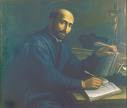









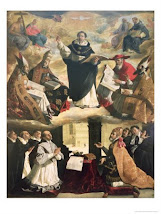
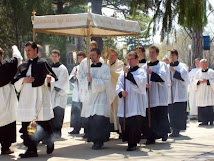

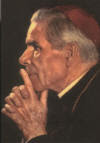

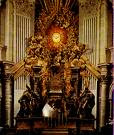
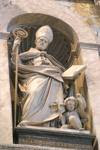



No comments:
Post a Comment